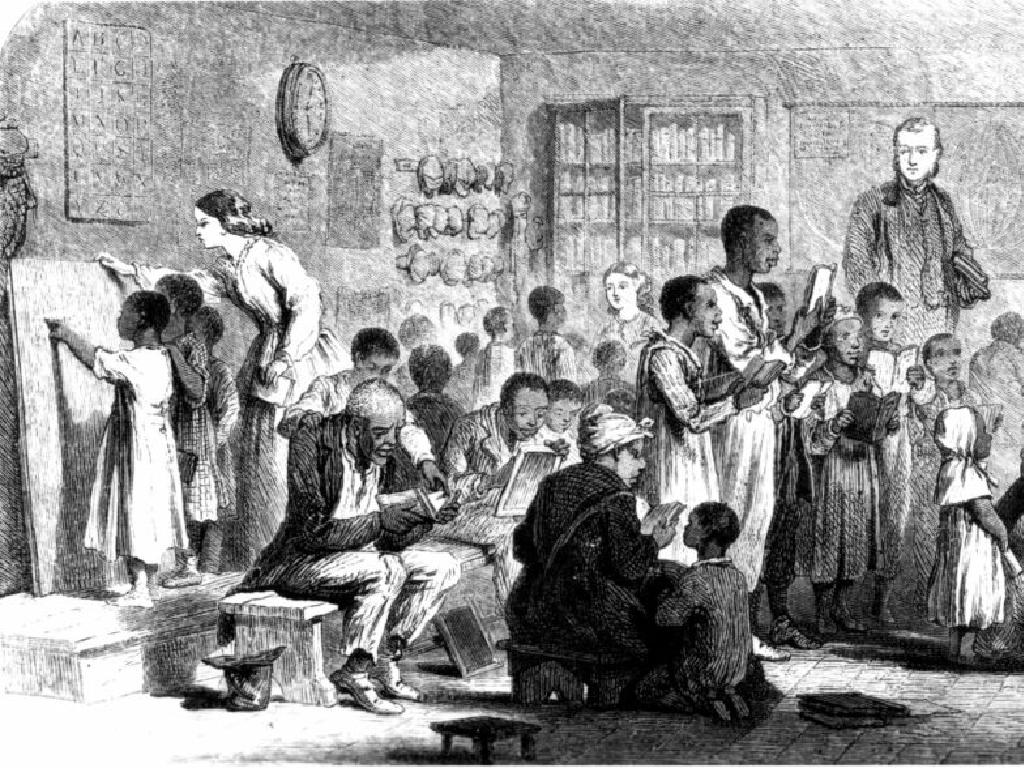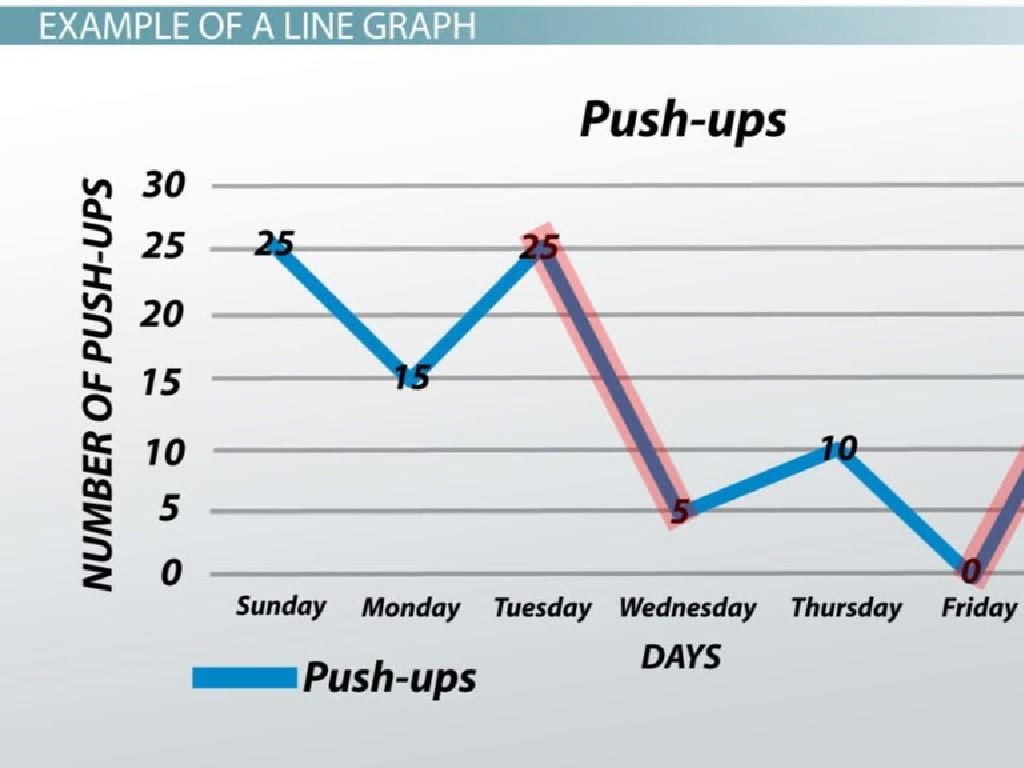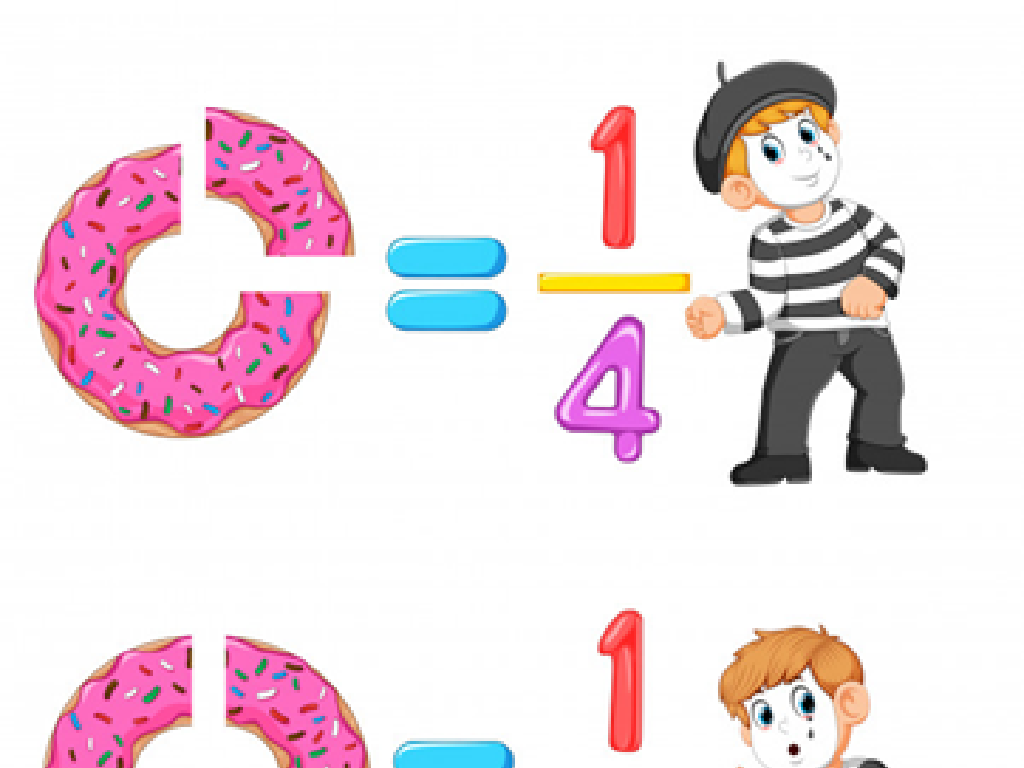Find The Mean
Subject: Math
Grade: Fifth grade
Topic: Statistics
Please LOG IN to download the presentation. Access is available to registered users only.
View More Content
Welcome to Statistics: Finding the Mean
– ‘Mean’ means average
– Add up all the numbers, then divide by how many numbers there are.
– Steps to calculate the mean
– Helps compare different sets of data fairly.
– Importance of the mean
– It shows us the middle ground of a data set.
– Examples of mean in daily life
– Like average scores in games or daily temperatures.
|
Today, we’re going on an adventure to understand averages, specifically the ‘mean.’ The mean is a type of average used in math to describe the central value of a set of numbers. It’s calculated by adding all the numbers together and then dividing by the count of numbers. Understanding the mean is important because it helps us summarize a large set of data with a single value, making it easier to compare and analyze. We use the mean in our daily lives more often than we realize, such as when we calculate the average score in a game or the average daily temperature. Encourage students to think of situations where they might need to find the average of a set of numbers.
Understanding the Mean
– The mean is an average
– Add all numbers together, then divide by the number of items.
– It represents a middle value
– It’s the value equidistant from extremes in a data set.
– Finding the mean simplifies data
– Mean summarizes a number set
– Instead of many numbers, we use one number to describe the whole set.
|
The mean, or average, is a fundamental concept in statistics that provides a simple summary of a set of numbers. It is calculated by adding all the numbers in a set together and then dividing by the count of numbers. This single value can give us a sense of the ‘middle’ of the data, even if we don’t know all the individual values. When teaching this concept, use concrete examples like test scores or ages to help students grasp the idea of the mean. Have students practice by finding the mean of different sets of numbers to reinforce the concept.
Calculating the Mean
– Add all numbers together
– If we have 3, 5, 6, add: 3+5+6
– Count total numbers in set
– For 3, 5, 6, we have 3 numbers
– Divide sum by number count
– Sum of 14 divided by 3 numbers
– Mean is the average value
– The mean of 3, 5, 6 is 14/3 or 4.67
|
When teaching fifth graders to find the mean, start with a simple set of numbers. Explain that the mean is the average and can be found by following three steps. First, add all the numbers in the set to get the sum. Next, count how many numbers are in the set. Finally, divide the sum by the count of numbers to find the mean. Use examples with small numbers to make it easier for students to calculate. Practice with the class by giving them different sets of numbers and guiding them through the steps. Reinforce the concept that the mean represents the central value of the set.
Calculating the Mean
– Add all the numbers together
– Example: 5 + 8 + 12 + 3 + 9 = 37
– Count the total numbers
– Example: There are 5 numbers in the set
– Divide the sum by the count
– Example: 37 divided by 5 equals 7.4
– The result is the mean
– So, the mean of 5, 8, 12, 3, 9 is 7.4
|
This slide is aimed at teaching fifth graders how to calculate the mean of a set of numbers. Start by explaining that the mean is the average value which represents the central point of a data set. Use the example provided to demonstrate the process step by step. First, add all the numbers to get the total sum. Then, count how many numbers are in the set. Next, divide the total sum by the number of items to find the mean. Emphasize that the mean is a type of average that can be used to summarize a set of numbers with a single value. Encourage students to practice with different sets of numbers to become comfortable with the process.
Practice Time: Calculating the Mean
– Find the mean of two sets
– Work together with a classmate
– Set A: 4, 6, 5, 10, 7
– Add all numbers and divide by the count
– Set B: 14, 18, 12, 20, 16
– Add all numbers and divide by the count
|
This slide is an interactive class activity where students will practice calculating the mean (average) of two different sets of numbers. Encourage students to work in pairs to foster collaboration. For Set A, guide them to add the numbers (4+6+5+10+7) and then divide by the number of data points (5) to find the mean. Repeat the process for Set B (14+18+12+20+16) divided by 5. Provide additional examples if time allows and ensure to walk around the classroom to assist any students who may need help. Discuss as a class afterward and reinforce the concept that the mean is the sum of the values divided by the number of values.
Mean Team Challenge: Class Activity
– Split into groups for activity
– Calculate the mean of your set
– Add all numbers and divide by total count
– Present your findings to class
– Discuss varying means of sets
– How can different sets have same mean?
|
This activity is designed to provide hands-on experience with calculating the mean. Divide the class into small groups and provide each with a different set of numbers. Guide them through adding all the numbers in their set and dividing by the total number of values to find the mean. After calculations, each group will present their mean to the class. Facilitate a discussion on how different number sets can result in the same or different means, reinforcing the concept of average. Possible variations for the activity could include sets with whole numbers, decimals, or even contextual data like ages or heights to make the activity more engaging.
Why the Mean Matters
– Mean: A snapshot of data
– Used in sports, science, economics
– Averages in basketball points, scientific measurements, financial markets
– Helps make informed decisions
– Choosing the best product, planning events based on weather averages
– A key concept in statistics
|
The mean, or average, is a fundamental concept in statistics that provides a simple summary of a set of numbers. It’s widely used in various fields to analyze data. For instance, in sports, calculating the average points per game helps compare players. In science, it’s used to interpret experimental data, and in economics, it can reflect trends in financial markets. Understanding how to calculate and interpret the mean empowers students to make decisions based on numerical data, such as choosing the best product based on average reviews or planning events considering average weather conditions. Emphasize the practicality of the mean in everyday life and encourage students to think of other areas where it might be useful.
Homework: Mastering the Mean
– Complete ‘Finding the Mean’ worksheet
– Practice with various number sets
– Understand how to calculate mean
– Add all numbers together, then divide by the number of items
– Share your learnings next class
|
This homework assignment is designed to reinforce the concept of finding the mean, or average, of a set of numbers. The worksheet provided will guide the students through the process step by step. Encourage them to practice with different sets of numbers to gain confidence. Remind them that to find the mean, they need to add up all the numbers in the set and then divide by the total count of the numbers. In the next class, students will have the opportunity to share their findings and discuss any challenges they faced. This will help them understand the concept better and learn from each other.





